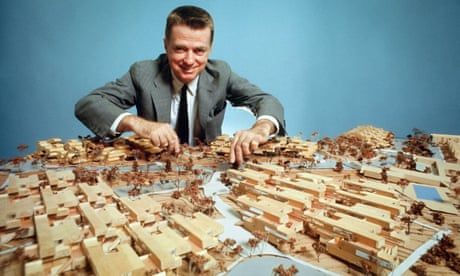
He preferred caves to goldfish bowls and had a transparent-bottomed bath poking through his kitchen ceiling – but most of his audacious work has been demolished. In a new exhibition, it rises again
A striking matrix of slender steel struts and intersecting planes of glass stands on a street in midtown Manhattan, forming a crystalline tower amid a regular row of townhouses. The layered elements of the facade appear to slip and slide past each other, puncturing a vertiginous stack of interior spaces, where suspended staircases connect floating mezzanines and houseplants trail from hovering balconies. It is a beguiling place of mirrors, cubbyholes, partitions and folding panels, a plexiglass and plasterboard palace that feels as if it might reconfigure itself at any moment – just like the Japanese toy robots displayed on one of its pristine white shelves.
This is the Modulightor building, the futuristic domestic vision of Paul Rudolph, an architect known for his imposing brutalist hulks, but who went through numerous different guises over the decades. He started out building breezy beachside homes in Sarasota, Florida, in the 1950s, before becoming the macho maestro of megalithic megastructures in the 1960s. After a fall from favour, as the world turned against such strident modernism, he concluded his career concocting camp New York party pads in the 1980s – when he wasn’t painting models of Voltron robots.
Continue reading...